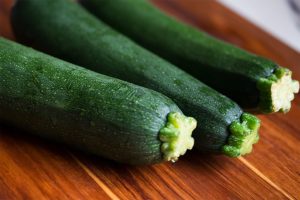In this short series of posts ‘ME/CFS Simple Strategies’ trainer and former sufferer of ME/CFS and fibromyalgia Simon Pimenta explores strategies for people with ME/CFS looking at:
1. Diet
2. Supplements
3. Rest
4. Exercise
5. Stress
1. ME/CFS & Diet
Please re-read the caveats in the first article!
As stated in the first article, diet is a big topic and often advise is conflicting.
The first article on diet focussed on the Stone Age Diet. You can read that article here
This second article on diet will explore Glycemic Index and how GI relates to how foods affect your blood sugar.
The third article on diet will look at the anti-candida diet.
Diet Part 2: Glycemic Index And Blood Sugar
The key advise given by some nutritionists to people wanting to use nutrition to stabilise and enhance energy is:
Eat low Glycemic Index (GI) Foods.
What Is Glycemic Index?
GI relates to how foods affect your blood sugar, compared to glucose, which is given a GI value of 100.
A low GI diet is advocated as the first step for people with hypoglycaemia (when blood sugar drops to below normal levels).
Low GI foods release their sugars into your blood slowly, helping to maintain steady energy levels.
High GI foods can cause a hike in blood sugar levels, causing an energy spike, followed by an energy crash.
Low GI foods include whole foods, such as certain fruits and vegetables, nuts and seeds, meat, fish, eggs, beans and lentils.
Actually protein- meat, fish, eggs, have no carbohydrate content.
You may come across Glycemic Load (GL), which takes portion size into account:
GI multiplied by the amount of carbohydrate contained in a standard portion of food, then divided by 100.
Dr John Briffa, a Medical Doctor who has a degree in nutritional medicine, suggests the following classification:
GLYCEMIC INDEX/LOAD HIGH MEDIUM LOW
GLYCAEMIC INDEX 70+ 50-69 ≤49
GLYCAEMIC LOAD 20+ 10-20 ≤10
You may come across other classifications, based on different portion size.
A food which has a high or medium GI may have a low GL because you only eat a small amount of it, for example:
Kiwi fruit GI 53, GL 6
Watermelon GI 72, GL 4
Potatoes and other grains have high GIs and GLs
Potatoes 85, GL 26
White rice 65, GL 21
However, trying to second guess what is the correct portion size is somewhat arbitrary, and if you like a food, you might not restrict yourself to a small portion.
What To Eat
The GI chart below will help you at a glance make food choices that keep blood sugar stable.
There may be some variance between GI scores from different sources.
Points To Consider
- Low GI foods release their sugars into your blood slowly, helping to maintain steady energy levels.
- High GI foods can cause a hike in blood sugar levels, causing an energy spike, followed by an energy crash.
- Avoid high GI foods if you want to stabilise blood sugar and energy.
- Switching to a low GI diet may result in withdrawal symptoms that may persist for weeks, for instance if you have a yeast overgrowth.
- If you eat just a small portion of medium GI foods with other low GI foods, then it is having a different impact on blood sugar than if you are eating just a big bag of french fries.
- Skipping meals will not help brain function. The brain needs a steady supply of glucose. Healthy snacks include nuts and fruit.
- Too much caffeine can give you a temporary boost, but too much can be problematic, and relying on it to get through the day may result in excessive stimulation and may affect quality of sleep.
Food For Thought
Would reducing the amount of high GI foods be beneficial to your wellbeing?
If you are intrigued to learn more about GI, check out:
Dr Sarah Myhill’s book Diagnosis and Treatment of Chronic Fatigue Syndrome and Myalgic Encephalitis: It’s Mitochondria, Not Hypochondria is a good resource.
Coming Up…
In the next post, I will explore the anti-candida diet.
You can read it here
Comment
Do leave a comment on how useful you found this article.
I am interested in your thoughts.
If you found the article useful, feel free to share.
Contact Me
Feel free to contact me here for a free consultation* to find out more about how I work, or if you have any questions.
I do 3 free coaching sessions each week.
I promise that I won’t sell anything.
During the session, we will work together to:
- Clarify your current situation
- Identify a number of clear, reasonable goals
- Identify what is stopping you from achieving them
- Identify practical steps to help you achieve these goals.
*One session per person.
Follow My Blog
Subscribe to my feed (box in the top left corner) to receive future blog articles.
______________________________________
 SIMON PIMENTA is a hypnotherapist, coach and trainer working with people to boost resilience and performance, and minimise stress.
SIMON PIMENTA is a hypnotherapist, coach and trainer working with people to boost resilience and performance, and minimise stress.
After working in a demanding job as the Director of a Housing Trust, he went off sick and remained unable to work for the next 8 years.
He discovered a pioneering approach to resolving health issues and got back his health, and now trains others using these same techniques.

